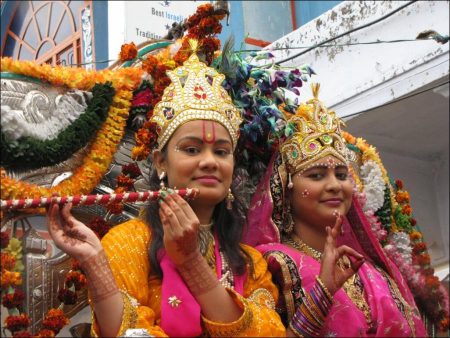China is an ancient, mysterious land w which extends up to an area of 9,596,960 sq km. This country, with its rich culture and ancient traditions, is abundant in its resources and minerals and has served people for generations. The splendid Chinese culture, with its distinctive customs, is credited with four great inventions viz., gun powder, paper, printing and compass.
This keenness of the Chinese culture can also be seen in the uniqueness displayed in their arts and crafts, calligraphy, embroidery, operas, painting and silk. Martial art, a fairly recent concept in the rest of the world, has been a part of the Chinese culture for centuries.
Chinese literature has also contributed a lot towards shaping the rich heritage of this culture. The delectable and vibrant Chinese cuisine is also amazing and has travelled to most of parts of the globe to turn into a universal cuisine. For more amazing and interesting facts about Chinese culture, scroll further!
— Chinese civilization is considered to be the longest and the most continuous civilization of the world.
— In ancient times, it was believed that China was situated in the center of the world and hence the name ‘China’ or ‘Zhong Guo’, which means ‘Central Nation’ or ‘Middle Kingdom’.
— The first human skull, which is estimated to be about 67,000 years old, was found in Liujiang, southern part of China.
— Considered to be one of the most prominent introductions to the Chinese culture, Buddhism carved a new beginning to religion and philosophy in China, in the second century B.C. During this period, innovative ideas led to new designs, temple layouts, new styles of figure painting, sculptures, furnishings etc.
— Chinese is the most widely spoken language with about 850 million speakers across China.
— In the present day Chinese culture, the Chinese Government has incorporated several elements of Chinese tradition. Various forms of Chinese literature, art, music, fashion, film and architecture have been revived vigorously with the rise of Chinese nationalism.
— Opportunities for social advancement of the Chinese are purely based on their performance in the prominent imperial examinations which have been in place since 605 A.D. This helped the Emperor select skillful bureaucrats and also refined the perception of culture in China.
— Calligraphy, a decorative practice of hand writing, was developed as an art form in China, over 2,000 years ago. Nowadays, this art form is done with special pens and ink rather than the brushes used in the olden days.
— Previously, sculpting and painting weren’t significant in Chinese art forms but with the iconography of Buddhism, they reached a different level altogether during the fifth and the sixth centuries. During the Middle Ages, the art styles which were prominent were the Tibetan, Mughal and Mongolian styles.
— There are about 300 different forms of opera in China with a rich history of more than 800 years. Chinese Opera has been popular for generations and uses string instruments along with high-pitched vocal stylings.
— During the Chinese Spring Festival, about 230 million people go back to their hometowns to welcome the arrival of the Chinese New Year. This is the time of the year when public transports get congested with a sea of people and subsequently, ticket fares skyrocket. China observes a 15 day holiday throughout the nation which is the reason for this mass migration.
— Shanghai, in China, is considered the biggest city of the world with a population of 16 million.
— Being a multi-racial country, China is home to 56 ethnic groups.
— In the Sichuan province of China, the population is more than the total inhabitants of Canada, Australia, Austria, Guatemala, Holland, New Zealand, Malaysia, Portugal, and Greece taken together.
— Unless you have a close relation or association with the person you meet, you should not address a Chinese with the first name. Official or professional titles such as “Mayor Wang” or “Engineer Li” can also be used for the address.
— During ‘Great Leap Forward’, Mao Zedong’s unsuccessful experiment, which was a step towards making China, a modern economy, about 20-30 million people died of starvation.
— Chopsticks, the wooden cutlery items, are a specialty of the Chinese and are used for the longer reach. It is not considered good manners to play unnecessarily with them. Chinese prefer to dine with their families and use the traditional, hygienic and well-designed utensils.
— Ginseng is considered the most important herb of Chinese diet and has special significance in their folklore and tradition as well. For about five thousand years, special herbs were compulsorily included in Chinese diet charts, for a long and problem free life.
— Chinese follow very specific traditions with respect to their outfits. They wear dark colors for special ceremonies whereas light colors for casual outings.
— One of the wider known and followed customs of Chinese culture is giving a hard-boiled egg, dyed red, in order to make birth announcements.
— According to the Chinese culture, dragon is considered to be the most powerful and is the luckiest symbol for them among all the other twelve animals of the Chinese zodiac.
— One of the major attractions of China is ‘Great Wall of China’ that is more than 21000 km long. Another attraction here is the 46-ton of the ‘Great Bell temple’ situated in Haidian District of Beijing.
Views: 504





